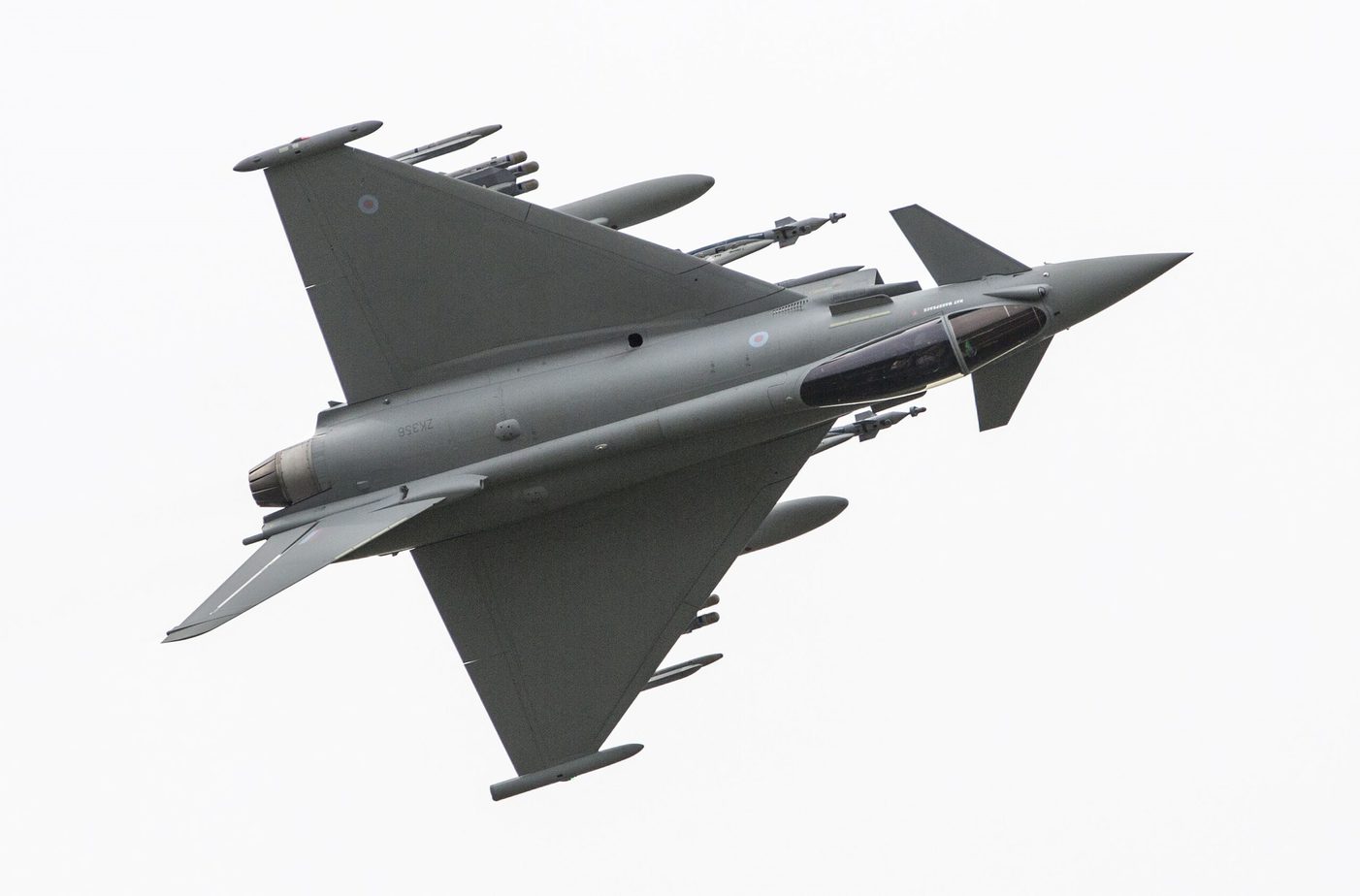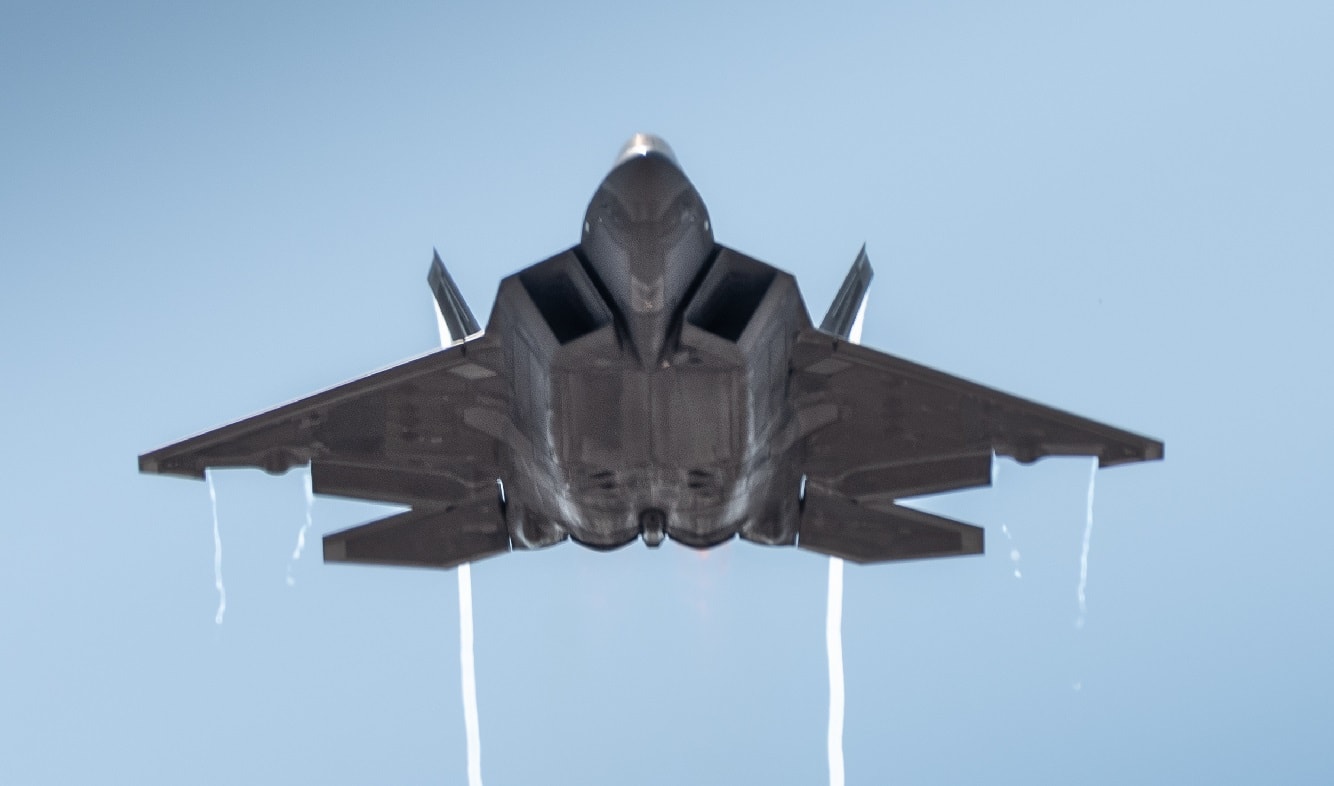
By Kris Osborn, President, Warrior
The Eurofighter Typhoon Fighter Jet may have emerged in 2003. Yet, the aircraft has received software, weapons, computing, and electronics upgrades to help the airframe sustain the high-level combat performance necessary to prove valuable in a modern high-threat environment. The aircraft began its service with the UK, Germany, Italy, and Spain but has moved forward to fly with many countries, such as Austria, Saudi Arabia, and Kuwait.
While not quite as stealthy or fast as an F-22, the Typhoon was built with F-22-like performance parameters such as an impressive thrust-to-weight ratio and Mach 2 speed. Airframes can remain viable for decades, provided they receive sufficient and regular maintenance with structural reinforcement as needed. Therefore, with a solid airframe, a fighter jet can be upgraded with new weapons, software, sensors, computing, avionics, and communications technology, making it an almost entirely different aircraft than it was at its inception.
This transformation is the case with the US F-15 and F-16, which emerged in the 1980s and are still flying today as competitive, highly capable, upgraded 4th-generation aircraft. In the case of the F-15 and F-16, the continued modernization is referred to as a Service Life Extension Plan, comparable to Europe’s Typhoon fighter jet.
Thrust to Weight Ratio
The Typhoon achieves its high-performance “thrust-to-weight” ratio with its lightweight materials and Eurojet 2000 engines; the aircraft is built with 70-percent carbon fiber composites. Software upgrades to the Typhoon have enabled a “swing-roll” capability, something a Typhoon pilot told me at the Farnborough Airshow in 2014, allowing the fighter to perform multiple functions simultaneously, such as fire missiles and drop bombs.
Typhoon Eurofighter Weapons
The Eurofighter was upgraded with a new generation of weapons in recent years, technologies that drastically improve the range, reach, accuracy, and lethality of its attack capabilities. The aircraft has 13 hardpoints, and the GPS and laser-guided bombs carried by the Typhoon include 2,000, 1,000, and 500-pound GBUs and the Paveway IV, a 500-pound laser-guided bomb.

German Air Force Eurofighter. Image Credit: Creative Commons.
The Typhoon has, for instance, been armed with a European missile referred to as the Storm Shadow, a highly lethal air-launched missile used to destroy Saddam Hussein’s bunkers at the beginning of Operation Iraqi Freedom in 2003. Known for its accuracy, the Storm Shadow can achieve precision targeting and fire two missiles through the same hole in an enemy bunker target. The weapon used a special double charge explosive effect, called a BROACH warhead, which includes an initial penetrating blast followed by a controlled detonation of the main warhead using a variable delay fuze.
The Storm Shadow, also on the Royal Air Force’s Tornado aircraft, is built with a stealthy external configuration, multi-mode GPS and inertial navigation precision guidance system, and something called terrain reference technology, Paul Smith, former UK Royal Air Force pilot, Typhoon operational test pilot, and Fighter Weapons School Instructor, told me at Farnborough UK as far back as 2014.
The Typhoon enhancements have also included the addition of a short-range stand-off missile called Brimstone II. This precision-guided weapon has also been in service on the British Tornado aircraft. Originally designed as a tank-killer weapon, Brimstone II is engineered with an all-weather, highly precise millimeter wave seeker. In Afghanistan many years ago, a Brimstone was used to destroy an Al Qaeda terrorist on a motorcycle traveling at 60km per hour.
Smith also told Warrior Maven that the Eurofighter was armed with a European missile called Meteor, which significantly increases what pilots refer to as the “no-escape range” – the distance or point at which an air-to-air adversary cannot fly away from or “escape” an approaching missile.

Pictured is a Royal Air Force Typhoon FGR4 performing a display during the 2016 RIAT Royal International Air Tattoo.
Typhoon Radar and Avionic
The Typhoon’s active electronically scanned array radar, or AESA, provides pilots with an expanded field of view compared to the existing radar system and an ability to track multiple targets at one time. The AESA provides a mechanical ability to rapidly reposition the receiver to increase the area in which it can pick up signals. The new radar is designed to work with other onboard sensors, such as forward-looking infrared sensors and passive infrared tracking technology, to locate stealth aircraft with a low radar cross-section.
The sensing technology on board the Typhoon fighter is called Pirate, or passive infrared and targeting equipment. It is a combination of infrared search and track and forward-looking infrared sensors. The Typhoon’s cockpit has three large LCD displays, which the pilot can switch between when assessing mission requirements. Many of the displays include situational awareness information such as moving digital maps, atmospheric information, sensor data and targeting information.
The Typhoon and U.S. Air Force F-22 Raptor have participated in joint training exercises at Nellis Air Force Base, Nevada.

U.S. Air Force Maj. Paul Lopez, F-22 Demo Team commander, performs a high speed pass maneuver during the Fort Worth Alliance air show in Fort Worth, Texas, Oct. 19, 2019. Representing the U.S. Air Force and Air Combat Command, the F-22 Demo Team travels to 25 air shows a season to showcase the performance and capabilities of the world’s premier 5th-generation fighter. (U.S. Air Force photo by 2nd Lt. Sam Eckholm)
About the Author: Kris Osborn
Kris Osborn is the Military Technology Editor of 1945 and the President of Warrior Maven – Center for Military Modernization. Osborn previously served at the Pentagon as a Highly Qualified Expert with the Office of the Assistant Secretary of the Army—Acquisition, Logistics & Technology. Osborn has also worked as an anchor and on-air military specialist at national TV networks. He has appeared as a guest military expert on Fox News, MSNBC, The Military Channel, and The History Channel. He also has a Masters Degree in Comparative Literature from Columbia University.

